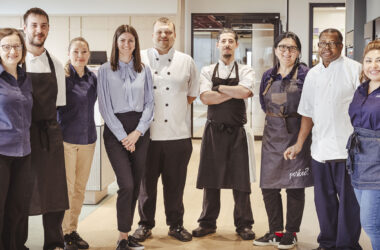Expert Guides
How to tender a catering contract

The tendering process for catering follows a detailed and time-intensive approach that typically spans three to four months.
Clients may choose to engage with a catering consultant. The Foodservice Consultants Society International (FCSI) is the trade body for catering consultants. The process and stages are broadly similar though they may be in a different order. Clients work with a catering consultant because it can reduce the amount of time they spend on the tender project and the consultant can provide specialist knowledge that the client may lack.
1. Pre-qualification process
Potential tenderers are required to complete a pre-qualification questionnaire (PQQ), which assesses their experience, geographical reach, current clientele, financial standing (including the last three audited accounts), and liability insurance coverage. The responses enable clients to create a shortlist of suppliers that best align with their business and catering requirements.
2. Invitation to tender (ITT)
Upon review of the PQQ, the client will typically create a shortlist of caterers to submit a full proposal. Typically, four or five caterers will submit full proposals.
The ITT should include;
-
General background to the company
-
Overview of the catering services
-
The reason for tendering the service
-
Evaluation criteria
-
Timetable
-
Response format required
-
Contract type
-
Service(s) specification
-
Current volumes
-
Costs to be included and not included
-
How TUPE will be handled
-
A list of questions / requirements to respond to
-
Proposed contract
-
Scope for a non-compliant/alternative proposal
-
Spreadsheets for completion: shopping basket, cost and sales analyses, labour schedule and costs, mobilisation costs, management fee.
3. Contractor’s visit to client site
All bidders are invited to a briefing session where the client outlines their catering objectives and conducts a tour of the facilities, including both back and front of house areas. This visit allows contractors to gain insights into the client’s ethos, culture, and operational requirements.
4. Tender document
Contractors submit their tender documents, often in both hard and soft copy formats. The submission includes sample menus, method statements for various catering services, descriptions of support resources (e.g., marketing, training, health and safety), mobilisation plans, supply chain information, and proposals for service innovation. Contractors may also include alternative proposals if appropriate.
It’s best practice if a range of the client’s stakeholders are involved in the evaluation process of the final stages (5 and 6). Ideally procurement, executive management, facilities management, hospitality user, HR wellness professional and customer representatives.
5. Site visits to shortlisted contractor’s sites
Following evaluation of the tender document, visits to the shortlisted contractor’s sites should be arranged. The purpose is to see the bidder’s catering in real life. It’s important to focus on the menus, food presentation, customer service, merchandising and marketing materials and the managerial style.
The operations manager should be at the site visit; they will be your main point of contact should the contractor be successful. Clients need to feel that they could forge a good working relationship with them. It is also best practice to request to meet the contractor’s client for a private discussion about the contractor’s services.
6. Presentation
Shortlisted contractors (usually 2-3) present their proposals in detail, addressing the client’s expectations and demonstrating how they will meet the requirements outlined in the tender document. Ensure adequate time is allocated for presentations, allowing for detailed discussions and clarifications. A scoring system is often used during the evaluation process, rating different aspects of the presentation to ensure a thorough and fair assessment.
Final thoughts
Conducting the tender process for catering contracts involves meticulous planning, comprehensive evaluation, and strategic decision-making, ultimately ensuring the selection of the most suitable caterer to meet the client’s needs and objectives.
Expert advice
BM offers expert guides on workplace catering, including ‘How to develop a contract catering strategy’ and ‘How to tender a catering contract’. Explore our guides for valuable insights and practical tips to navigate the tender process effectively.




